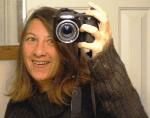
by
Benjamin Fisher -
Festival Nomad CorrespondentIntroduction...Dear readers ... I am
Benjamin Fisher. I am 12 years old and I am a
War of 1812 British re-enactor from Sault Ste. Marie, Ontario, Canada. Re – enacting is probably the best hobby in the world!
I discovered re-enacting when I was 6 or 7 years old . My mother is a curator at the
Ermatinger Cleurge National Historic Site and they have an 1812 event every September. When I was 6, I only knew about voyageurs and
Coureur Du Bois who are men and women who would tell stories about the life of a voyageur. But when I heard about
1812 re- enacting I wanted to learn more about it. I started learning drills from
Mr. Kevin Brooks an 1812 re-enactor from Barrie, Ontario for 2 years while he attended events at the
Ermatinger Site in Sault Ste. Marie. After the 2 years my mother and I decided we would go on a 6 hour trip with 2 of her co- workers to
Wasaga Under Siege.
This event was the thing that totally got me hooked on re-enacting.
Before we left to go to Wasaga, I wrote a letter to the coordinator of the event
Mr. David Brunelle about seeing if I could borrow a British uniform and assisting in the reenactments. When I got the “yes” from him at the event I was so happy I almost bowed down to him right then and there. His reply to me was very formal and properly addressed with permission from the regiment, with the closing comment: “God save the King”.
Day 1...
The next morning (opening day) of the event I was mustered up and ready for the day. About 2 hours into the day I was told that I was going to become the cannon’s powder monkey. The powder monkey was the most dangerous job in the
War of 1812. If the powder monkey was shot then the cannon couldn’t fire, if the cannon couldn’t fire then there wouldn’t be as many casualties on the battle field. For this I had to wear a new set of clothes that pertained to the position, and also had to learn how to load, clean and carry the powder for the cannon. I even had to wear ear plugs in order to protect my ears from the blast of the cannon and the black powder shot.
Later that day I met up with my friend and mentor,
Mr. Kevin Brooks. Kevin said that he came to be our regiments sergeant during the battle that night, and he would be there for the afternoon the next day.
During the Cannon demonstration with my new leaders / friends Colin and Andrew they let me light the cannon a few times which I held as one of the events highlights for me. The men were very good at training me, and providing me the safety precautions, and seriousness of the maneuvers. Then Colin asked Dave Brunelle if I would be allowed to enter the battle line with the Royal Newfoundland Regiment. Before the battle another member of the regiment.
(To Be Continued)



